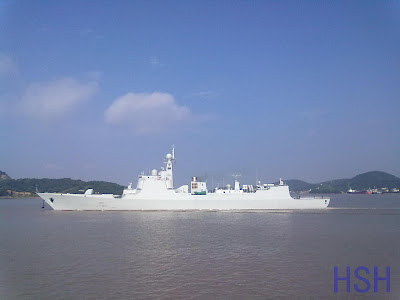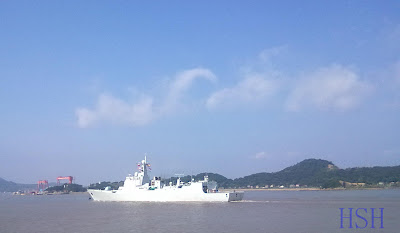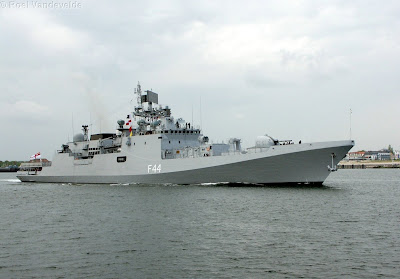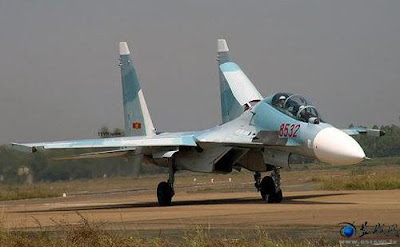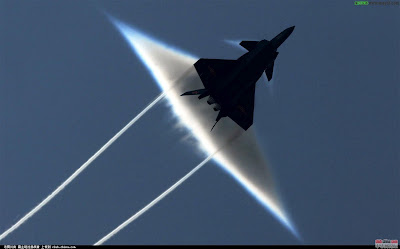 |
| Naval DH-10 Cruise Missiles |
Images have surfaced of a naval variant of the DH-10 LACM on a China Navy test vessel. The missile canisters spotted appear to be virtually identical to the land-based variant. This sort of arrangement is reminiscent to the deployment of the BGM-109 Tomahawk on United States Navy surface combatants by way of the MK-143 Armored Box Launcher. The MK-143 enabled vessels such as the Iowa Class Battleships and Spruance Class Destroyers to launch the BGM-109.
The images suggest that the DH-10 would be installed in the same way as the YJ-62 or YJ-83 anti-ship missiles. This is advantageous for the current generation of China Navy surface combatants, giving designs such as the 052C land attack capability with minimal structural modification. However, the downside is that the arrangement would sacrifice anti-ship capabilities by substituting the YJ-62 or YJ-83 systems with DH-10 launchers. It also means that only a maximum of eight missiles can be carried and that is assuming the launch canisters can be stacked on top of one another.
In spite of its disadvantages and simplicity compared to the deployment of vertically launched LACMs by other navies, the adoption of a naval variant of the DH-10 is a considerable capability leap for Beijing. This development would enable China to complete its “cruise missile triad”, complementing the already in-service land-based system and the air-launched variant, the CJ-10. Missiles launched from land-based platforms are restricted to striking targets around China’s periphery, not so dissimilar to the range limitations faced by the Second Artillery Force’s inventory of conventional ballistic missiles.




